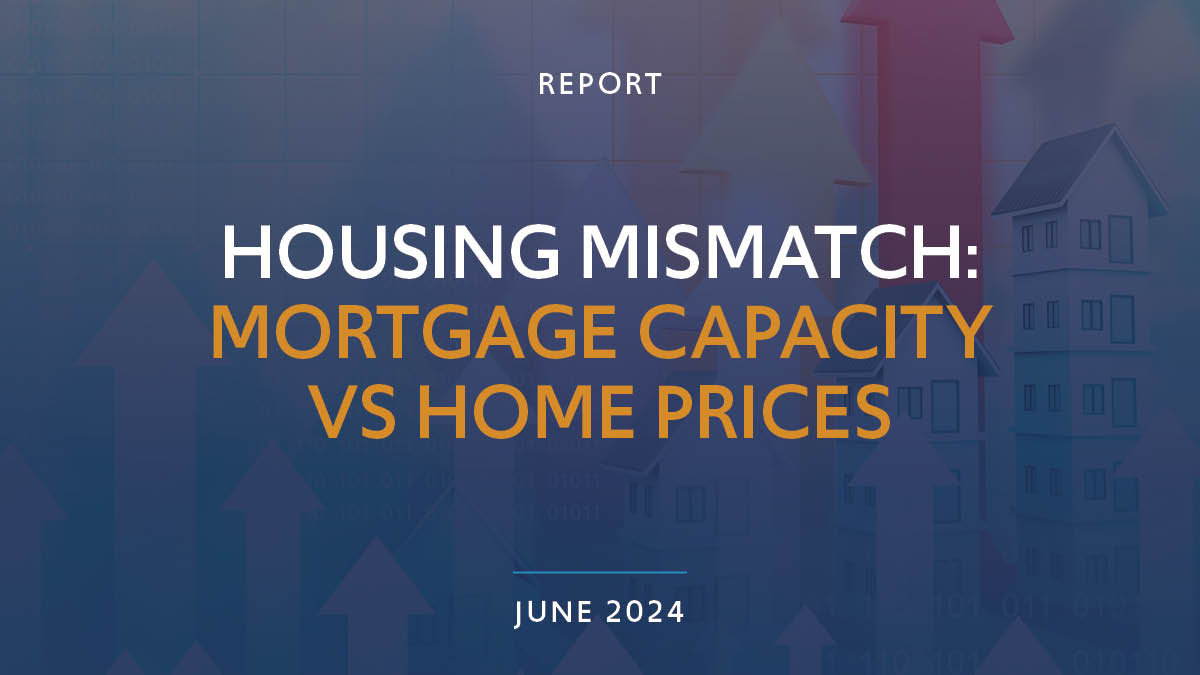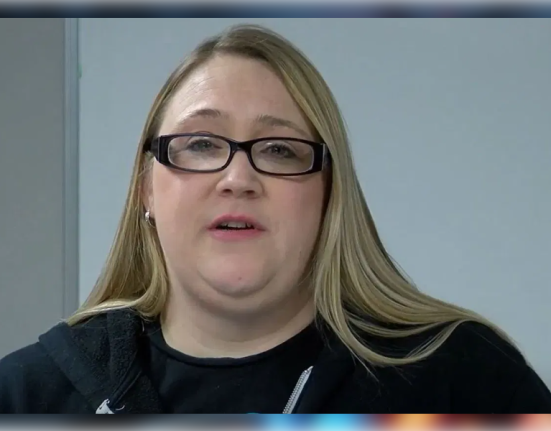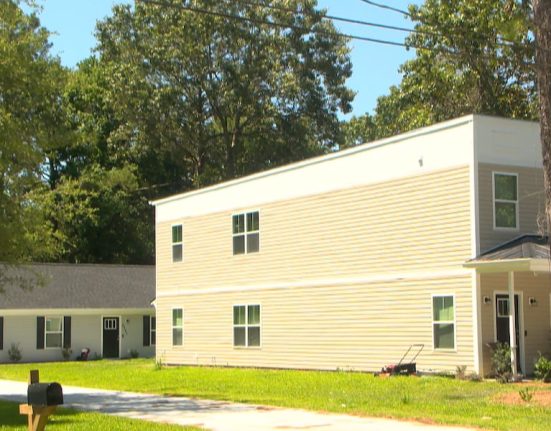Author: Steven L. Byers, Ph.D., DJ Summers
Since 2010, the median value of owner-occupied housing in Colorado has increased 132.4%. Over the same period median household income has increased 65.2%. The difference between the change in the value of owner-occupied homes and households’ median income has produced a massive increase in the mismatch between the mortgage capacity of households and the value of owner-occupied housing.
A 0% mismatch between mortgage capacity and housing stock would mean all households are able to afford all existing housing stock. A 100% mismatch would mean none are. In 2010, the mismatch was 46.8%, in 2022 the mismatch was 60.2%, meaning the share of households unable to affordably purchase the existing housing stock is rising.
The mortgage capacity for the median household was $344,468 in 2022, while the median home value was $549,900. The mortgage capacity for the average household was $459,679, while the average priced home was $712,426. The more than $205,000 to $252,000 gap between what the median and average household can afford is reflective of the gap seen across the income spectrum.
This report details household mortgage capacity and owner-occupied housing values and provides an estimate of the mismatch between household mortgage capacity and owner-occupied housing values for the state and the following metropolitan statistical areas: Colorado Springs, Denver, Fort Collins, Grand Junction, and Pueblo. These are shown in the appendix.
Mortgage capacity is determined under the following parameters: a 30-year, fixed-rate mortgage, households spend no more than 30% of their household income on payments, and households are buying as much house as they can afford under that 30% threshold. Capacity does not include down payments. A home valued above mortgage capacity is deemed unaffordable to the specified income level for purpose of the analysis. In reality, households choose to spend a larger share of their income on housing or have access to larger down payments, allowing them to own a home deemed unaffordable by this analysis.
This analysis does not consider the added cost of home ownership insurance and property taxes. What is known is that homeowner insurance rates have increased nearly 51.7% since January 2019.[i] Property values have increased dramatically as the average home price increased 37% over 2022 and 2023. The net result is that the mismatch between household mortgage capacity and home values is greater than shown in this report.
To alleviate increasing home prices, the housing shortage, estimated to be between 45K and 115K in the Denver metro area alone and an additional 21K to 49K combined units for El Paso, Larimer, Mesa, Pueblo, and Weld counties, needs to be reduced by building more housing. Policy at both the state and local levels needs to increase what can legally and economically be built. This will entail a combination of zoning reforms and addressing the large risk-premium of developing condominiums under current law.
- More Coloradans have the capacity to afford more expensive owner-occupied housing in 2022 than in 2010. However, the market is oversupplying higher ranges of owner-occupied housing.
- 44% of Colorado households can afford mortgage payments on a home priced above $500,000, yet those homes make up 54% of housing stock.
- 42% of households cannot afford a home above $300,000, yet only 16% of homes are valued at $300,000 or less. In 2010, 65% could not afford a home over $300,000 yet 66% of homes were under $300,000.
- The mismatch in household mortgage capacity and the value of owner -occupied housing has grown from 46.8% in 2010 to 60.2% in 2022. There are too few lower priced homes, and too many higher priced homes based on the share of households that have the mortgage capacity to purchase them.
- In 2010, Colorado was ranked 20th in the nation for the size of the mismatch between household mortgage capacity and the value of owner-occupied housing. Colorado’s ranking rose to 11th highest, tied with California.
Figure 1 shows the share of the Households Mortgage Capacity in 2010 and 2022. The distribution changed dramatically as household income changed from 2010 to 2022. For household mortgage capacity of:
- Less than $50,000 – The share of household mortgage capacity in this range in 2010 was 6.8% and fell to 4.1% in 2022.
- Between $150,000 and $99,999 – The share of household mortgage capacity in this range in 2010 was 15.4% and fell to 7.9% in 2022.
- Between $100,000 and $149,999 – The share of the household mortgage capacity in this range in 2010 was 10.1% and fell to 5.8% in 2022.
- Between $150,000 and $199,999 – The share of household mortgage capacity in this range in 2010 was 14% and fell to 9.2% in 2022.
- Between $200,000 and $299,999 – The share of household mortgage capacity in this range in 2010 was 18% and fell to 15.1% in 2022.
- Between $300,000 and $499,999 – The share of the household mortgage capacity in this range in 2010 was 12.7% and increased to 13.4% in 2022.
- Between $500,000 and $999,999 – The share of household mortgage capacity in this range in 2010 was 18.4% and increased to 29.7% in 2022.
- More than $1,000,000 – The share of household mortgage capacity in this range in 2010 was 4.3% and increased to 14.7% in 2022.
Figure 1 – Household Mortgage Capacity 2010 vs. 2022
Figure 2 shows the share of the value of owner-occupied housing stock in 2010 and 2022. The distribution changed dramatically as the value of housing skyrocketed from 2010 to 2022. For housing valued at:
- Less than $50,000 – The share of the housing stock valued in this range in 2010 was 5.1% and fell to 3.1% in 2022.
- Between $150,000 and $99,999 – The share of the housing stock valued in this range in 2010 was 5% and fell to 2.1% in 2022.
- Between $100,000 and $ $149,999 – The share of the housing stock valued in this range in 2010 was 11.2% and fell to 1.4% in 2022.
- Between $150,000 and $ $199,999 – The share of the housing stock valued in this range in 2010 was 16.8% and fell to 2.3% in 2022.
- Between $200,000 and $ $299,999 – The share of the housing stock valued in this range in 2010 was 28.2% and fell to 7.3% in 2022.
- Between $300,000 and $ $499,999 – The share of the housing stock valued in this range in 2010 was 22.4% and increased to 30% in 2022.
- Between $500,000 and $ $999,999 – The share of the housing stock valued in this range in 2010 was 9.3% and increased to 43.2% in 2022.
- More than $1,000,000 – The share of the housing stock valued in this range in 2010 was 2.1% and increased to 10.5% in 2022.
Figure 2 – Share of the Value of Owner-Occupied Housing 2010 vs. 2022
Figure 3 shows the mismatch in the share of the value of owner-occupied housing stock and household mortgage capacity in 2010 and 2022. For mismatches in the range of:
- Less than $50,000 – The mismatch in this range in 2010 was 1.7% and fell to 1% in 2022
- Between $50,000 and $99,999 – The mismatch in this range in 2010 was 10.4% and fell to 5.8% in 2022.
- Between $100,000 and $149,999 – The mismatch in this range in 2010 was 1.1% and rose to 4.4% in 2022.
- Between $150,000 and $199,999 – The mismatch in the range in 2010 was 2.8% and rose to 6.9% in 2022.
- Between $200,000 and $299,999 – The mismatch in this range in 2010 was 9.8% and fell to 7.8% in 2022.
- Between $300,000 and $499,999 – The mismatch in this range in 2010 was 9.7% and rose to 16.6% in 2022.
- Between $500,000 and $999,999 – The mismatch in this range in 2010 was 9.1% and rose to 13.5% in 2022.
- More than $1,000,000 – The mismatch in this range in 2010 was 2.2% and rose to 4.2% in 2022.
Figure 3 – Colorado Mismatch in the Share of the Value of Owner-Occupied Housing Stock and the Share of Household Mortgage Capacity
Figure 4 – Mismatch in the Value of Owner-Occupied Housing vs. Household Mortgage Capacity for All States and the District of Columbia 2010
Colorado’s total mismatch was 0.468 in 2010, ranked 20th nationally. Hawaii was ranked 1st with a mismatch of 0.749, and Florida had the smallest mismatch with a value of 0.216 ranking them 51st nationally.
Figure 5– Mismatch in the Value of Owner-Occupied Housing vs. Household Mortgage Capacity for All States and the District of Columbia 2022
Colorado’s total mismatch increased from 0.468 in 2010 to 0.602 in 2022, a 28.6% increase, and ranked 11th nationally in a tie with California. Rhode Island was ranked 1st with a mismatch of 0.711 and New York had the smallest mismatch with a value of 0.261 ranking them 51st nationally.
Figure 6 – Colorado Springs MSA Mismatch in the Share of the Value of Owner-Occupied Housing Stock and the Share of Household Mortgage Capacity
Figure 7– Denver MSA Mismatch in the Share of the Value of Owner-Occupied Housing Stock and the Share of Household Mortgage Capacity
Figure 8 – Fort Collins MSA Mismatch in the Share of the Value of Owner-Occupied Housing Stock and the Share of Household Mortgage Capacity
Figure 9 – Grand Junction MSA Mismatch in the Share of the Value of Owner-Occupied Housing Stock and the Share of Household Mortgage Capacity
Figure 10 – Pueblo MSA Mismatch in the Share of the Value of Owner-Occupied Housing Stock and the Share of Household Mortgage Capacity
Figure 11 – Income Distribution
| Annual Household Income | Estimated Household Income Distribution (ACS) | Monthly Household Income | Household Mortgage Capacity (6.9%, 30% of GI, 30-Year Fixed Rate Mortgage) |
| $10,000 | 4.10% | $916.67 | ($38,971.55) |
| $15,000 | 2.50% | $1,375.00 | ($58,457.32) |
| $25,000 | 5.40% | $2,291.67 | ($97,428.87) |
| $35,000 | 5.80% | $3,208.33 | ($136,400.42) |
| $50,000 | 9.20% | $4,583.33 | ($194,857.74) |
| $75,000 | 15.10% | $6,875.00 | ($292,286.61) |
| $100,000 | 13.40% | $9,166.67 | ($389,715.48) |
| $150,000 | 19.00% | $13,750.00 | ($584,573.22) |
| $200,000 | 10.70% | $18,333.33 | ($779,430.96) |
| $300,000 | 14.70% | $27,500.00 | ($1,169,146.44) |
Figure 12 – Distribution of the Value of Owner-Occupied Housing Units
| 2022 Distribution of the Value of Owner-Occupied Housing Units | |
| Value of Owner-Occupied Units | Estimated Distribution of Owner-Occupied Housing Units |
| Less than $50,000 | 3.10% |
| $50,000 to $99,999 | 2.10% |
| $100,000 to $149,999 | 1.40% |
| $150,000 to $199,999 | 2.30% |
| $200,000 to $299,999 | 7.30% |
| $300,000 to $499,999 | 30.00% |
| $500,000 to $999,999 | 43.20% |
| $1,000,000 or more | 10.50% |
[i] https://smartfinancial.com/colorado-florida-home-insurance-rates-rise








